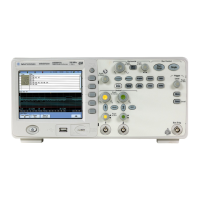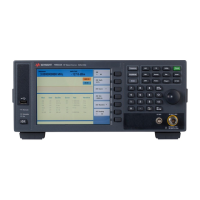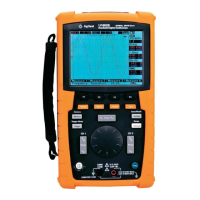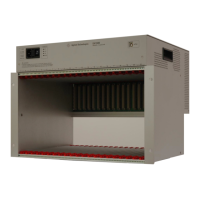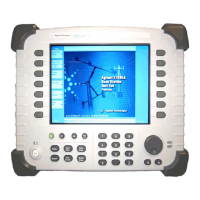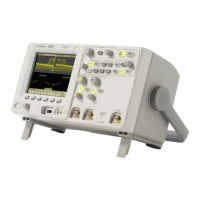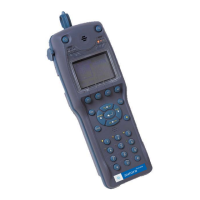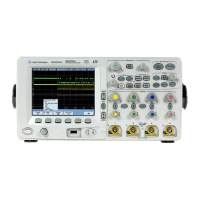Lesson 5 – Executing the ADC Distortion Test
355
5-1 ADC Distortion Measurements
ADC distortion is usually measured by sourcing a sine wave. The
digital response is first captured and then analyzed in frequency
domain. This means, the processed waveform is converted into its
spectrum using the FFT algorithm, and the calculations are based
on the frequency components.
In order to obtain a pure spectrum, coherent sampling has to be
established.
The ADC distortion measurements include:
DAC Dynamic Parameters (Distortion)
NOTE
THD, SND, SNR, and SFDR are defined and calculated in the same
way for DACs, ADCs and buffers.
For the definitions of THD, SND SNR and SFDR, see the Appendix
“Definition of DAC and ADC Characteristics” on page 567
Number of Effective Bits
The number of effective bits (Neff) is a special ADC characteristic.
N
eff describes the available resolution which is lower than the
specified number of bits would indicate.
The available resolution is influenced by:
• Differential and integral non-linearity
• Missing codes
• Noise
• Quantization error
A major factor is the ADC’s inherent uncertainty.
•Total harmonic distortion (THD)
•Signal-to-noise plus distortion (SND)
•Effective Number of Bits (Neff)
•Signal-to-noise ratio (SNR)
•Spurious free dynamic range (SFDR)

